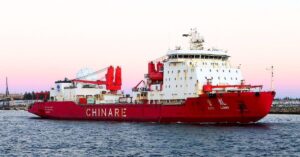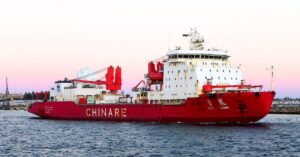
Watch: Pro-Palestinian Activists Protest Against Ship Carrying Explosives For Israel
November 5, 2024
IMO Secretary-General Visits Red Sea Countries To Discuss Current Situation
November 5, 2024

China’s 41st Antarctic expedition team left Guangzhou, Guangdong Province, on Friday to begin a seven-month scientific mission.
The experts will work on crucial projects including the construction of support facilities for the new Qinling Station in Antarctica and studying how climate change impacts the region’s ecosystem.
The team will be using three ships: the research icebreakers Xuelong and Xuelong 2, also known as Snow Dragon and Snow Dragon 2, and the cargo ship Yong Sheng.
The Xuelong 2, which is designed to travel at a speed of 15 knots, is expected to arrive in Antarctica on November 26.
Over the next few months, scientists on board will conduct extensive examinations of Antarctica’s wildlife, water conditions, sediment layers, pollution levels, and atmospheric environment.
Officials said the study will provide important insights into how Antarctica influences global climate change.
Long Wei, a senior official of the Chinese Arctic and Antarctic Administration, confirmed that Chinese scientists would conduct surveys from several Antarctic research stations, including Kunlun, Taishan, Zhongshan, and Changcheng (Great Wall).
The expedition will cover important locations such as Prydz Bay in East Antarctica, the Astronaut Sea, the Ross Sea in the west, the Amundsen Sea, and the waters surrounding the Antarctic Peninsula.
The research will focus on studying marine and soil environments, snow and ice conditions, and even atmospheric and space-related factors to provide a full understanding of this unique and dynamic region.
The mission will also involve collaboration with international researchers, with a focus on scientific research and logistics.
Reference: China Daily, CGTN
China Sets Sail On 7-Month Long Antarctic Expedition To Study Climate Change Impact appeared first on Marine Insight – The Maritime Industry Guide
Source: Maritime Shipping News


